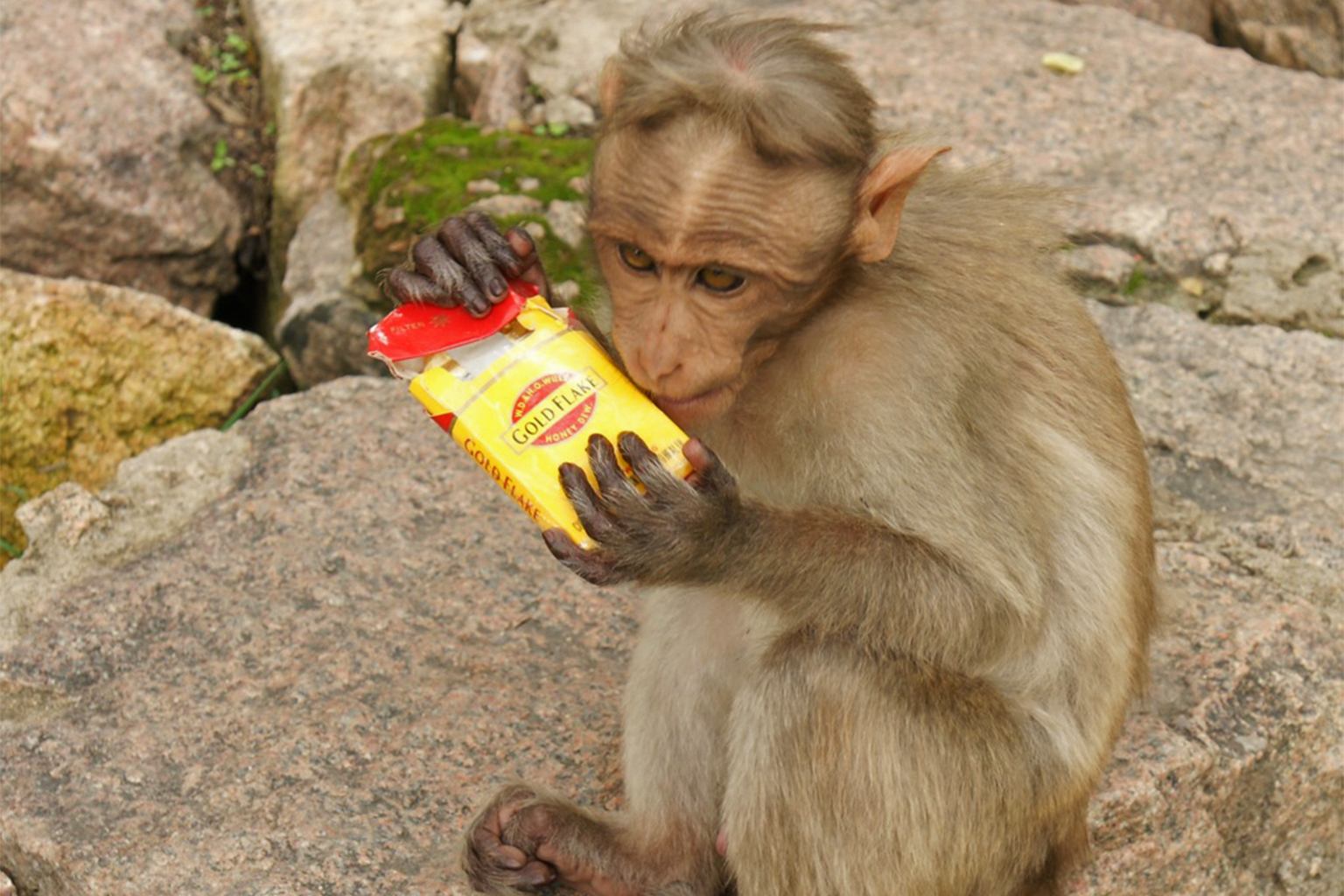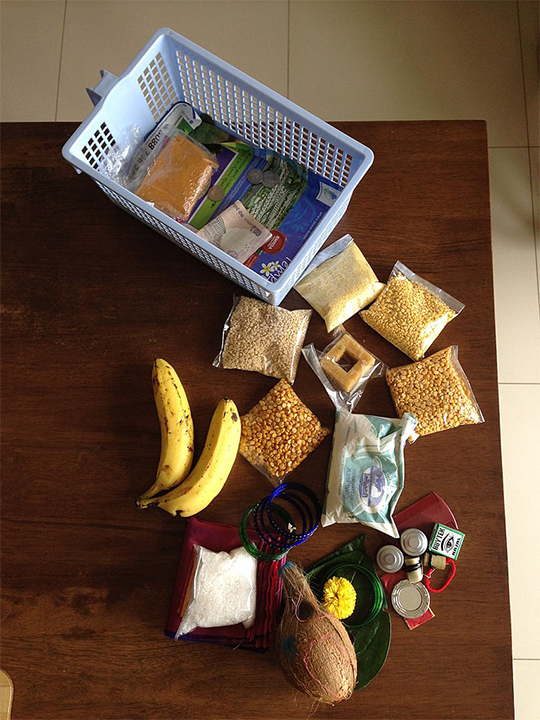- Synthetic textiles, non-woven bags, polyester fibres in soft toys, cigarette butts, chewing gum, tea bags and even religious offerings are some of the unexpected places where some form of plastic shows up.
- Lack of understanding of waste segregation practices and recycling processes prevail even as consumers express concern about plastic pollution.
- Corporate social responsibility is one way of tackling the pollution that poor disposal of plastic waste causes. Companies packaging their products in plastics must also move towards alternative options or take up responsibility for tackling the pollution that their continued use of plastic packaging produces.
Plastics are the Anthropocene era’s ultimate convenience.
The more mundane uses of plastics in our lives range from kitchenware, storage containers, and packaging materials to toys and small tools that make everyday chores a little easier. But plastic is so pervasive that there are many unexpected places where it finds use.
For example, did you know that synthetic textiles are essentially plastics? Many people are unaware of this.
“During a series of training sessions that we conducted recently for waste workers from several ULBs (urban local bodies) in Agra and Patna, we laid out an array of everyday objects and asked the workers to identify which ones were made of plastics,” says Bharati Chaturvedi, Founder-Director of Chintan, a Delhi-based NGO working on waste management. “Many were unable to identify polyester clothing, fleece jackets, or even disposable masks as plastic,” she adds.
I wonder — as consumers, would we have performed any better?
But it’s not just textiles that can confound people; did you know that non-woven plastic bags that feel like cloth are also made of plastics? These bags, which are soft and air permeable like cotton bags, are made of spun and bonded polypropylene fibres. Unfortunately, their usage has soared across India since the single-use plastic ban was announced, as they can be much cheaper than genuine cotton cloth bags.
The same fibers, along with polyester fibers are also used in making fake fur and as stuffing in toys and pillows. Yes, that stuff inside your child’s soft toy is usually not cotton; it’s a bouncy cloud of plastic.
Besides this, most paper cups, plates, boxes, and even snack food packaging that are labeled ‘eco-friendly’ may not be so. This is because most of these products are lined with non-biodegradable polyethene or biodegradable poly-lactic acid plastic films to keep them waterproof.

Read more: [Explainer] The cost of plastic waste
Watch what you chew or smoke or brew or eat
Chewing gum is probably one of the most surprising products that contains plastic. Although traditional chewing gum bases were made of natural tree resins such as chicle, today, most gum bases contain petroleum-based plastics such as polyethylene and polyvinyl acetate which are FSSAI-approved (Food Safety and Standards Authority of India; sub-regulations 2.7.3 of the Food Safety and Standards (Food Products Standards & Food Additives) Regulations, 2011).
Another unlikely place where plastics turn up are in cigarettes. The filters in cigarettes are made of a non-biodegradable plastic called cellulose acetate, that ends up in cigarette butts. In 2019, cigarette butts were one of the most littered plastic items along with plastic food wrappers, bottles, and bottle caps found on beaches and in the oceans. Floating cigarette butts are often eaten by fish and birds and are toxic to them. Cigarette butts are deemed hazardous waste as they are known to leak heavy metals, organic toxins, and microplastics, all of which are toxic and sometimes even lethal to plants, fish, frogs, and other organisms.
In our kitchens, plastics lurk not only as coatings on non-stick cookware as polytetrafluoroethylene or Teflon, but also in teabags which are often made of polypropylene, the same material used to manufacture nonwoven plastic bags. But perhaps the most disturbing fact about plastics’ presence in the kitchen, is that it’s also there in our food. It is clear that that much of what we eat — fish and poultry, and even fruits and vegetables like apples and carrots, contain microplastics. There’s even evidence of microplastics in human poop and that unborn children are exposed to microplastics while still in the womb.

Heal thyself with plastic?
Recently, the health and medical sector made headlines because of the huge amounts of biomedical plastic waste that was ending up in the world’s oceans as a result of the COVID-19 pandemic. Most commonly, one would associate plastics in medicine with personal protective equipment — masks, face shields, and single-use polythene gloves — or testing kits with cartridges and sample collection tools made of sterile plastics.
But plastics’ versatile natures make them highly useful for many other applications in health and medicine. Several plastics such as polythene, polypropylene, and polycarbonates are widely used in medical implants such as intraocular lens and orthopedic implants like hip or knee replacements; while this isn’t too surprising, what is astounding is that a whole heart has also been replaced (temporarily) by a plastic pneumatic pump.
In dentistry, the easily moldable nature and cheap cost of acrylics make these plastics ideal as bases for dentures — a fact that gives the term ‘plastic smile’ a wholly literal meaning.
However, one of the more startling uses of plastics is in medication like pills; were you aware that some pills, especially those labeled ‘slow release’ or with ‘enteric coatings’ are encased in plastics? Thin films of cellulose acetate phthalate, ethylcellulose, methyl acrylate polymers and several other plastics are used to mask unpleasant smells, protect drugs from degrading, and ensure that the medications in tablets are released in a timely manner for maximum effectiveness.
Although the realisation that one often swallows plastics along with tablets may discomfit many, such plastics serve important purposes and are usually ingested in very small non-toxic amounts.

Read more: [Explainer] The life of plastic: born a hero, dying an outcast, resurrected a monster
Thoughtless little substitutions
However, over time, many natural materials in our lives have been substituted with plastic alternatives. Consider for example, that Indian markets are flooded with plastic brooms, substituting the local soft grass brooms or stiff coconut leaf brooms.
Such substitutes have even seeped into traditional ceremonies such as the vettala paaku (also called Thamboola/Thamboolam) in south India, where women exchange betel leaves, betel nuts, and flowers along with cloth, kumkum (the red powder dye used in forehead bindis), turmeric powder, and gifts during religious or social occasions. Thirty years ago, the cloth would have been cotton or silk, kumkum and turmeric would be wrapped in little paper packets, and the gifts would likely be some home-made sweets or special foods bundled in banana or Sal leaf plates. Now, the cloth is mostly a polyester synthetic, the kumkum and turmeric powders come in brightly coloured, shiny plastic sachets or brittle plastic boxes, and the gifts are given in plastic boxes, cups, or plates.
This trend has not just hit south India, but is a pan-Indian phenomenon. In Darjeeling, the guardian deity of the Tiger Hill, Sinchel ko Singha Devi, is offered a sohla shringar kit of 16 items ranging from jewelery and bindis to flowers and cloth during the puja season in March and April. In 2019, the Himalayan Cleanup conducted by the Scavengers youth group revealed the plastic waste crisis faced by the Senchal Mandir, which is located within the Senchal Wildlife Sanctuary, because of this tradition.
“Earlier, sohla shringar items would be made of natural materials, but now, almost every one of these 16 items is made of plastic – plastic earrings, bangles, necklaces; even the cloth offered is usually a synthetic textile,” says Priyadarshinee Shrestha, Team Leader at WWF-India’s Khangchendzonga Landscape, and Secretary, Indian Mountain initiative.
In 2021, the Sinchel Singha Devi Sthan Committee reported that four sacks of non-biodegradable waste were collected in just two weeks from the sohla shringar. “Such events worsen the issue of plastic waste in the hills, where waste management is already a challenge. We’re working with the priests and religious communities to stem this flow of plastic by letting people know that the Devi does not want plastic offerings. Hopefully, this will encourage them to bring offerings made of natural items,” she adds. In an effort to help with this transition, local women’s groups have been skilled to make the Shringar from all-natural elements to replace the plastic ones.

Being aware
With plastics skulking in unpredictable places, it’s not just consumers who need to be aware of these hidden plastics; waste workers also need to be trained to recognise unlikely plastics, plastics that don’t conform to the general norm of what plastics look like.
A series of training sessions to do just this was undertaken by Chintan in partnership with the CounterMEASURE project — a joint initiative of the United Nations Environment Programme (UNEP) and the Government of Japan. The CounterMEASURE project aims to study how plastic wastes flow into rivers, specifically the Ganges in India, and work towards generating resources such as city-specific policy recommendations, awareness building, and training modules to stem this flow.
“Our trainings in Agra and Patna showed us that such modules are necessary in order to equip waste workers with the required skills and knowledge to do their jobs effectively, especially with respect to plastic waste,” says the Chintan team.
However, for such training to be effective, it is important to recognise plastics, as plastics eventually comes back to consumers, who are also producers of waste. With the lack of an understanding of plastics, household segregation of waste, which is the bedrock of successful waste management, will falter and undermine the system.
Perception surveys conducted by The Energy Research Institute (TERI) and the International Forum for Environment, Sustainability, and Technology (iFOREST) – both of which have also partnered with CounterMEASURE – have revealed that although people in cities like Mumbai, Haridwar, Rishikesh, Prayagraj, and Agra view plastic pollution as a problem, many do not know of proper waste segregation practices and recycling processes. Even worse, many respondents in Agra view plastics as ‘easy to dispose of’ which highlights how unaware they are to the true state of plastic pollution in the world. Furthermore, most are unaware of alternatives to plastics that are as cheap, and easily or widely available.
Since awareness is the first step towards change, being alert to where and how plastics are used can empower consumer decisions on product choice.
Nevertheless, consumers can only do so much if choices are limited, especially when faced with product packaging. While one can consciously choose natural products over plastics, what can one do if these or other essentials come packaged in plastics?
At this point, corporate responsibility comes into play. Companies packaging their products in plastics must also move towards alternative options or take up responsibility for tackling the pollution that their continued use of plastic packaging produces. Although most large corporations widely advertise their efforts towards such goals, tangible outcomes have been underwhelming, as can be seen with Unilever’s attempts to justify the continued usage of plastic sachets.
Read more: PlastiCities: the role of grassroots initiatives in managing waste in cities
Banner image: Brightly coloured saris sold by street vendors are often made of synthetic fibers like rayon which are cheap and easily available. Photo by Harsha K R/Flickr.
